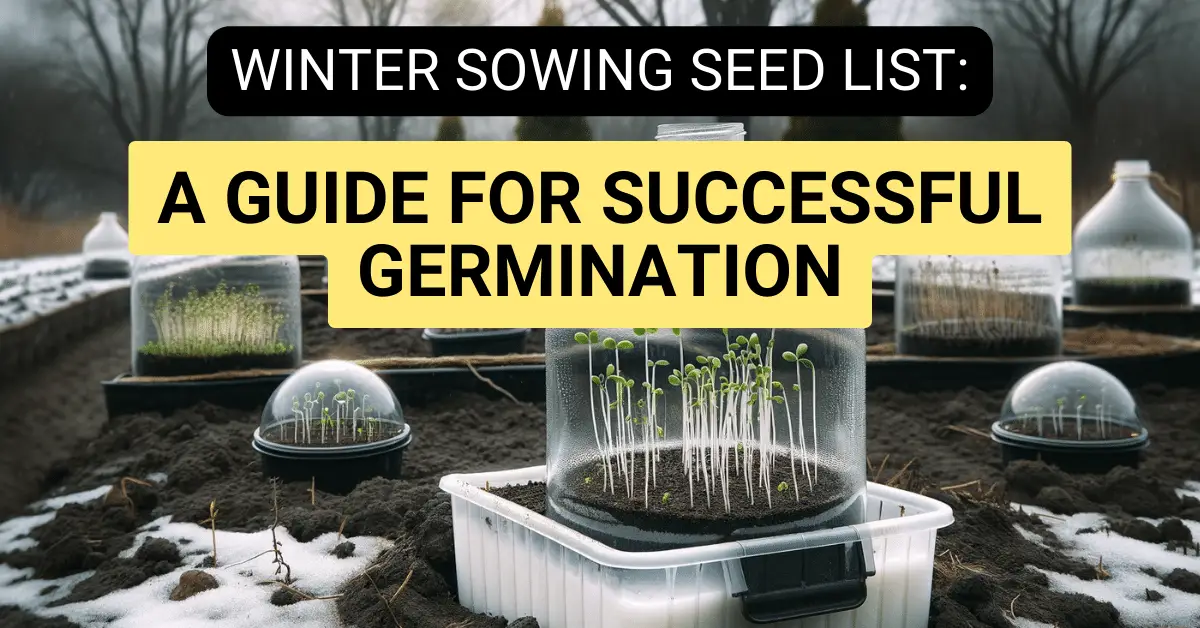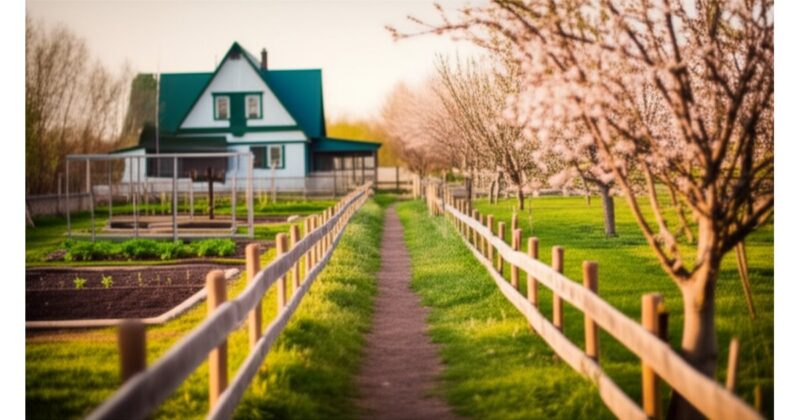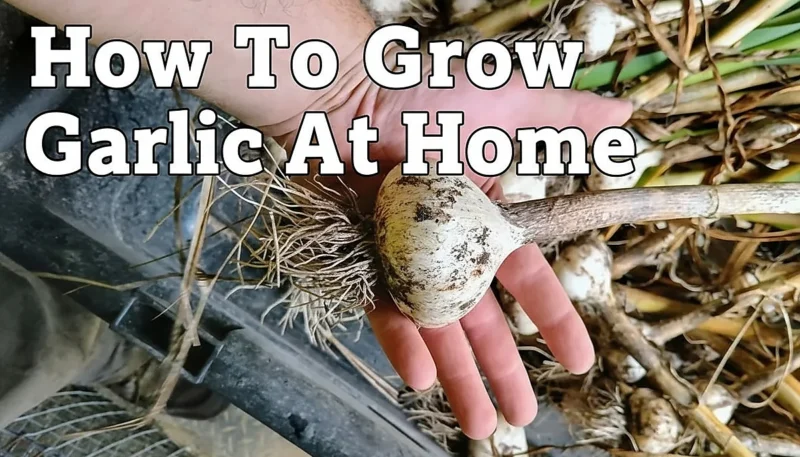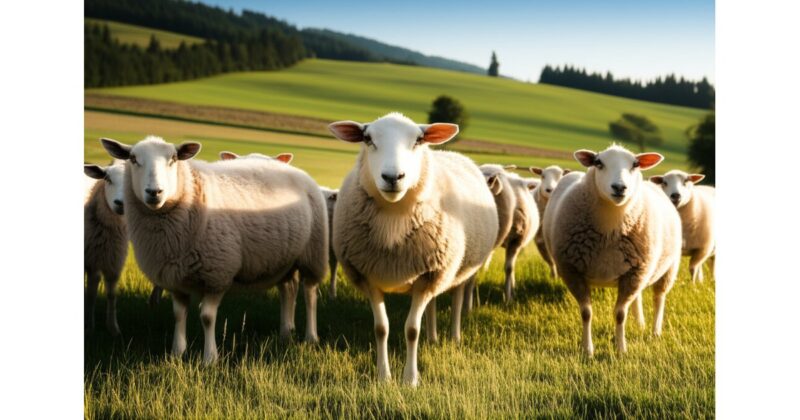Want to get a head start on your spring garden? Winter sowing lets you start seeds outdoors during the cold months, creating stronger plants naturally.
I had great success last year by winter sowing all my onions and flowers, and I’ll show you exactly how to succeed with this brilliant technique.
Finding Your Growing Zone
Before starting winter sowing, you need to know your USDA growing zone. This tells you which plants will thrive in your area and when to start sowing.
How to Find Your Zone
- Visit the USDA Plant Hardiness Zone Map website
- Enter your zip code
- Note your zone number (ranges from 1-13)
Zone Guidelines for Winter Sowing
- Zones 3-5: Start in December/January
- Zones 6-7: Start in January/February
- Zones 8-9: Start in February/March
- Zones 10-13: Start in March/April
Remember: Your local last frost date affects timing more than your zone. Check with your local extension office for specific dates.
What is Winter Sowing?
Winter sowing means planting seeds outdoors in mini-greenhouse containers during winter. These containers protect your seeds while exposing them to natural weather cycles.
Think of it as copying what happens in nature – many plants drop their seeds in fall, which then sprout in spring after going through winter’s cold.
Benefits of Winter Sowing
- Save money by using recycled containers instead of buying grow lights and heating mats
- Create stronger plants that don’t need hardening off
- Free up indoor space since everything grows outside
- Get earlier harvests compared to spring planting
- Reduce your carbon footprint with no electricity needed
Getting Started with Winter Sowing
Essential Materials
You’ll need:
- Clear plastic containers (milk jugs, soda bottles, or clear domes)
- Potting soil
- Seeds
- Knife or scissors
- Drill or something to make drainage holes
- Waterproof markers for labeling
Preparing Your Containers
- Clean your containers thoroughly
- Cut them in half horizontally, leaving a small hinge
- Drill 4-5 drainage holes in the bottom
- Make 3-4 ventilation holes in the top
- Fill bottom with 2-3 inches of moist potting soil
- Plant seeds at proper depth
- Close container and tape shut
- Label with seed type and date
- Place outside in a sunny spot
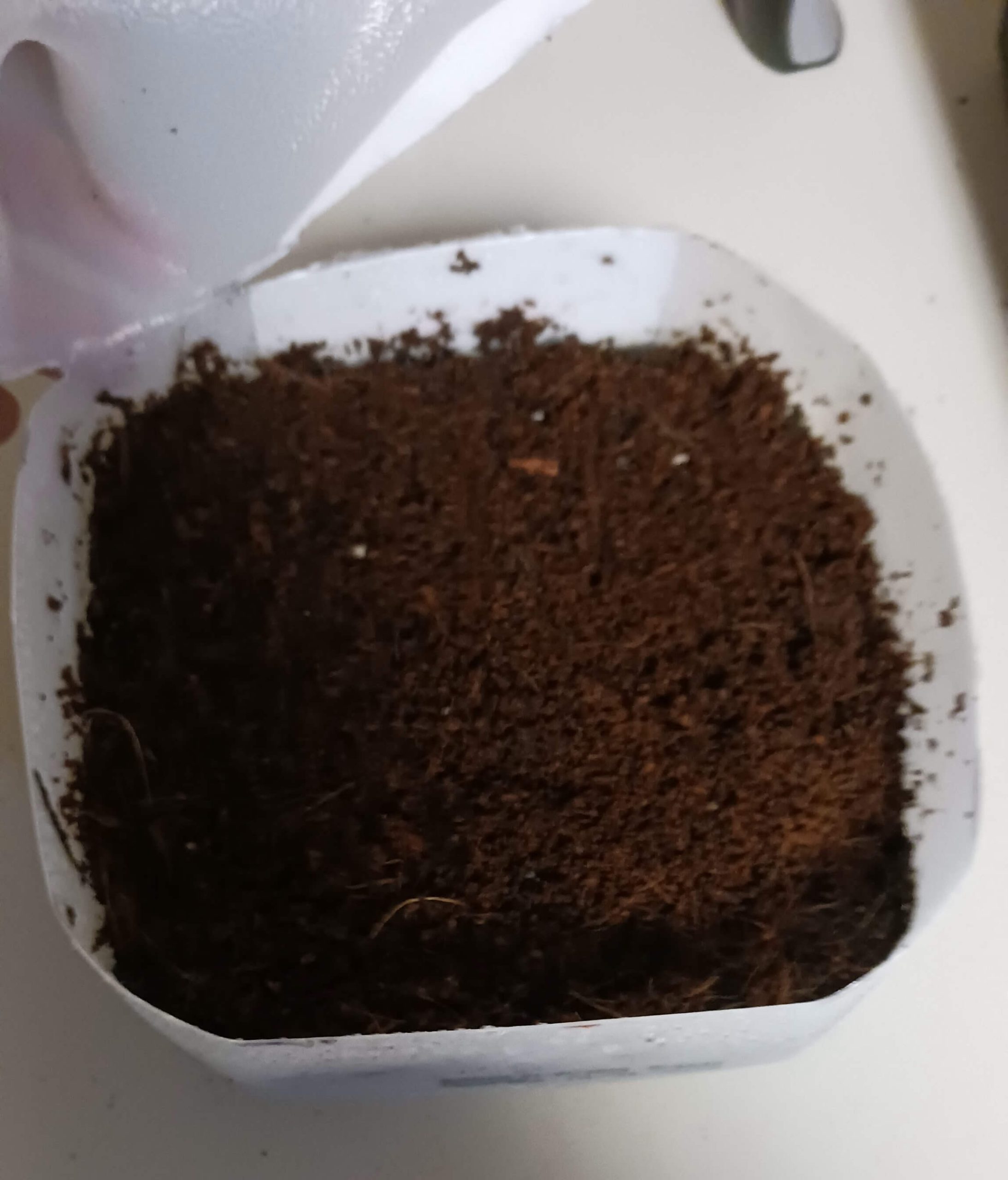
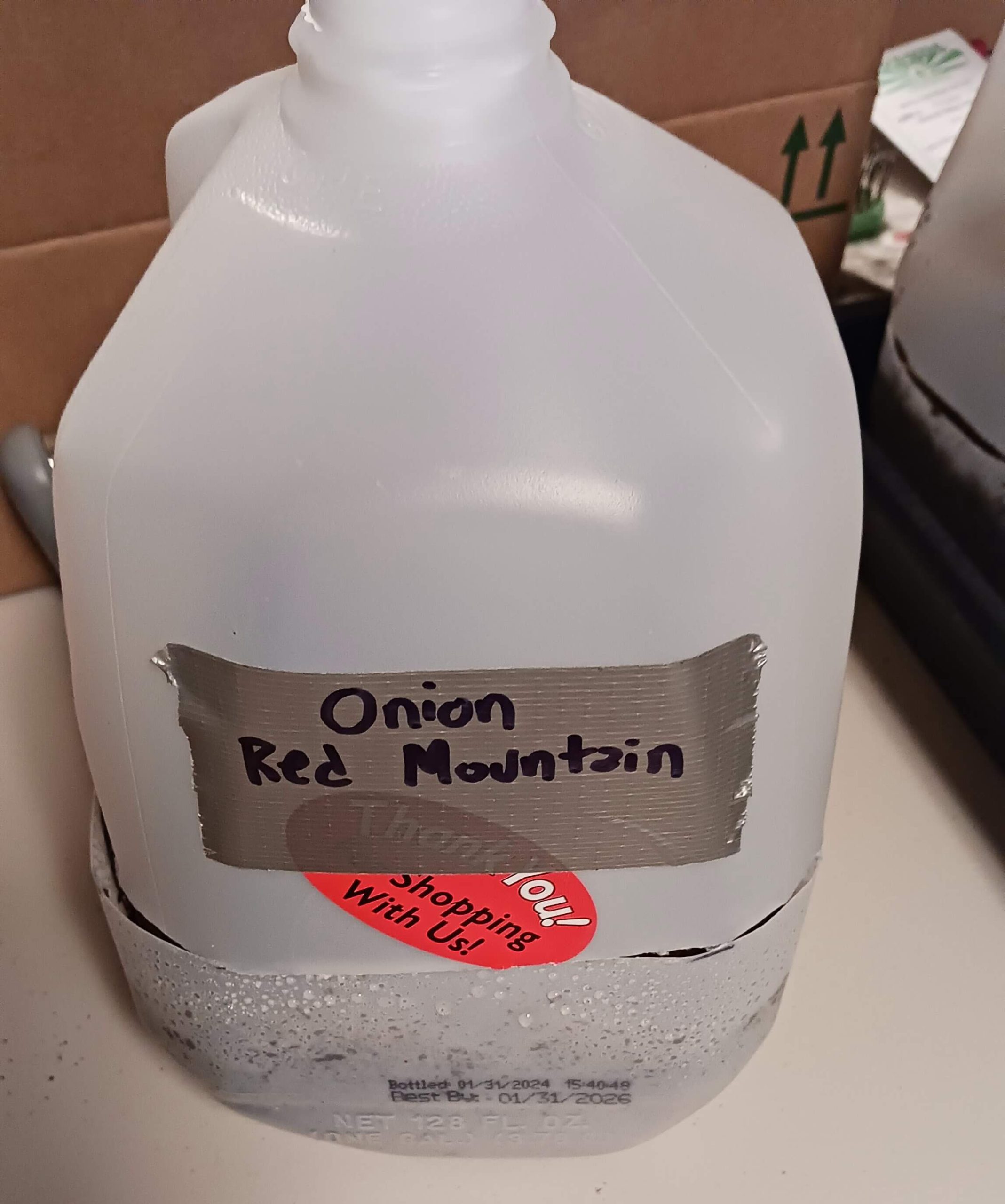
Best Seeds for Winter Sowing by Zone
Cold Zones (3-5)
These tough plants handle extreme cold:
Vegetables:
- Kale (all varieties)
- Onions
- Leeks
- Spinach
- Swiss Chard
- Brussels Sprouts
- Cabbage
- Turnips
- Rutabaga
- Parsnips
Flowers:
- Columbine
- Lupine
- Milkweed
- Echinacea
- Black-Eyed Susan
- Blazing Star
- Purple Coneflower
- Yarrow
- Delphinium
- Foxglove
- Hollyhock
- Butterfly Weed
- Joe Pye Weed
- Monarda (Bee Balm)
Herbs:
- Thyme
- Oregano
- Sage
- Mint
- Chives
- Winter Savory
- Lavender
- Catnip
- Valerian
- Angelica
- Horehound
- Hyssop
Medium Zones (6-7)
Add these to your winter sowing:
Vegetables:
- Tomatoes (late winter)
- Peppers (late winter)
- All Brassicas
- Carrots
- Beets
- Radishes
- Peas
- Cauliflower
- Broccoli
- Artichokes
- Asparagus
- Celery
- Kohlrabi
Flowers:
- Zinnias
- Marigolds
- Cosmos
- Sunflowers
- Morning Glories
- Nasturtiums
- Cleome
- Bachelor Buttons
- Calendula
- Sweet Peas
- Poppies
- Rudbeckia
- Gaillardia
- Sweet William
- Verbena
- Asters
Herbs:
- Basil (late winter)
- Parsley
- Cilantro
- Dill
- Borage
- Chamomile
- Fennel
- Lemon Balm
- Lovage
- Marjoram
- Rosemary
- Summer Savory
Warm Zones (8-9)
Focus on heat-loving plants:
Vegetables:
- Eggplants
- Melons (all varieties)
- Summer Squash
- Winter Squash
- Cucumbers
- Okra
- Sweet Potatoes
- Hot Peppers
- Sweet Peppers
- Tomatillos
- Lima Beans
- Yard Long Beans
- Malabar Spinach
Flowers:
- Amaranth
- Celosia
- Tithonia
- Gomphrena
- Portulaca
- Vinca
- Four O’Clocks
- Globe Amaranth
- Moonflower
- Hyacinth Bean
- Cardinal Climber
- Black-Eyed Susan Vine
- Mexican Sunflower
- Spider Flower
Herbs:
- Thai Basil
- Holy Basil
- Lemongrass
- Mexican Tarragon
- Cuban Oregano
- Vietnamese Coriander
- Stevia
- Mexican Mint Marigold
- Pineapple Sage
- Society Garlic
Hot Zones (10-13)
Winter sow these during your cool season:
Vegetables:
- Lettuce (all varieties)
- Snow Peas
- Sugar Snap Peas
- Garden Peas
- Arugula
- Mustard Greens
- Collard Greens
- Chinese Cabbage
- Pak Choi
- Endive
- Radicchio
- Turnips
- Radishes
- Beets
- Carrots
Flowers:
- Stock
- Snapdragons
- Pansies
- Violas
- Sweet Alyssum
- Larkspur
- California Poppies
- Candytuft
- Love-in-a-Mist
- Sweet William
- Dianthus
- Iceland Poppies
- Statice
- Chinese Forget-Me-Nots
Herbs:
- Cilantro
- Parsley
- Dill
- Chervil
- Salad Burnet
- Sorrel
- Anise
- Borage
- Caraway
- Coriander
- Fennel
- German Chamomile
Month-by-Month Planting Guide
January Planting
Flowers:
- Columbine
- Milkweed
- Calendula
- Snapdragon
- Butterfly Weed
Vegetables:
- Onions
- Leeks
- Garlic
- Kale
- Asparagus
Herbs:
- Oregano
- Thyme
- Mint
- Dill
- Catnip
February Planting
Flowers:
- Echinacea
- Foxglove
- Hollyhock
- Bee Balm
- Sweet Peas
Vegetables:
- Peas
- Broad Beans
- Brussels Sprouts
- Spinach
- Swiss Chard
Herbs:
- Lavender
- Lemon Balm
- Parsley
- Sage
- Chives
March Planting
Flowers:
- Marigolds
- Zinnias
- Cosmos
- Sunflowers
- Morning Glories
Vegetables:
- Tomatoes
- Peppers
- Broccoli
- Cabbage
- Lettuce
Caring for Winter Sown Seeds
Watering Tips
- Check moisture levels weekly
- Water if soil feels dry 1 inch down
- Use room temperature water
- Water gently to avoid displacing seeds
- Keep soil moist but not waterlogged
Protection from Weather
- Place containers where they’ll get natural precipitation
- Group containers together for wind protection
- Let snow cover them – it provides insulation
- Move to shade if temperatures exceed 65°F
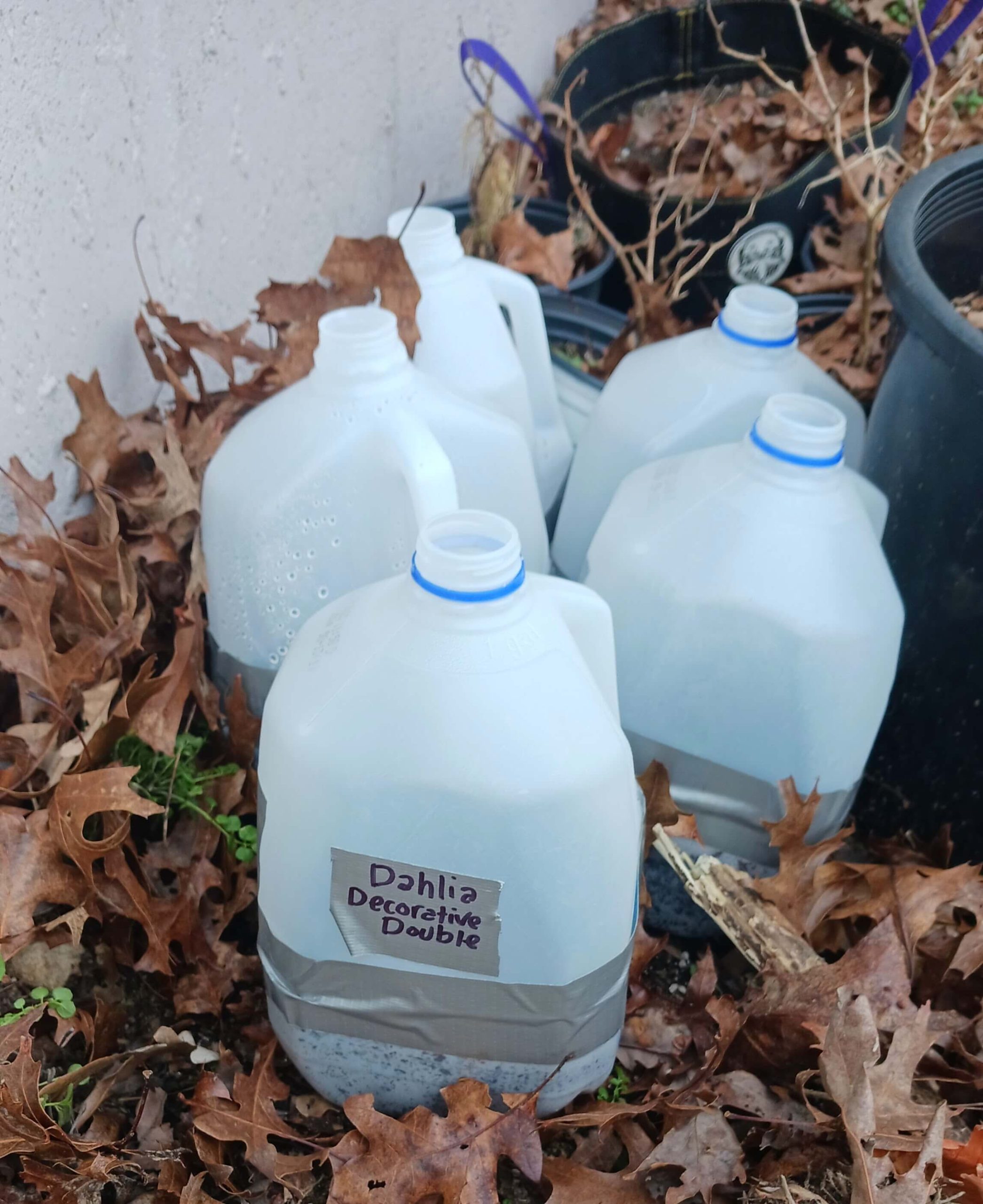
Common Problems and Solutions
Seeds Not Germinating:
- Soil too dry – check moisture regularly
- Wrong planting depth – follow seed packet instructions
- Old seeds – use fresh seeds next time
- Too cold – some seeds need warmer temperatures
Mold Growth:
- Improve ventilation
- Reduce watering
- Remove affected plants
- Clean containers better next time
Animal Damage:
- Use hardware cloth over containers
- Place containers on elevated surfaces
- Consider physical barriers
- Use animal deterrent sprays
Advanced Winter Sowing Tips
Succession Planting
Start new containers every 2-3 weeks for continuous harvests. This works especially well for:
Green onions
Lettuce
Spinach
Radishes
Peas
Temperature Management
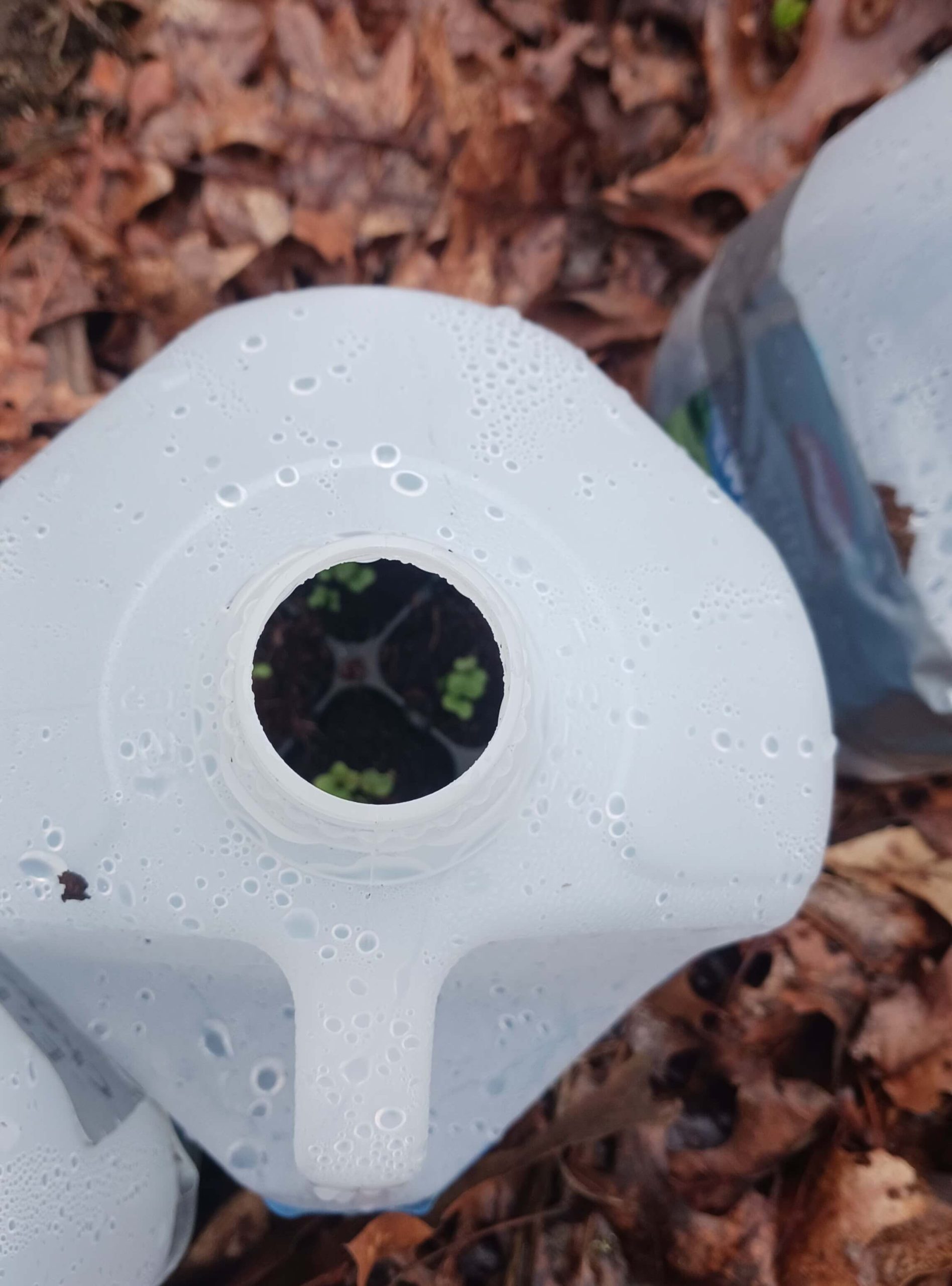
Daily Monitoring Requirements
- Soil Temperature: Check morning and evening
- Container Temperature: Monitor during peak sun
- Ventilation: Adjust based on readings
Optimal Ranges
- Most Seeds: 65-75°F
- Cold-Hardy: 45-65°F
- Warm-Season: 70-85°F
Transplanting Guide
When to Transplant
- 2-3 Sets of true leaves
- Root Development: Visible at drainage holes
- Night Temperatures: Above 50°F consistently
- Soil Conditions: Workable and warm
7-Day Hardening Off Schedule
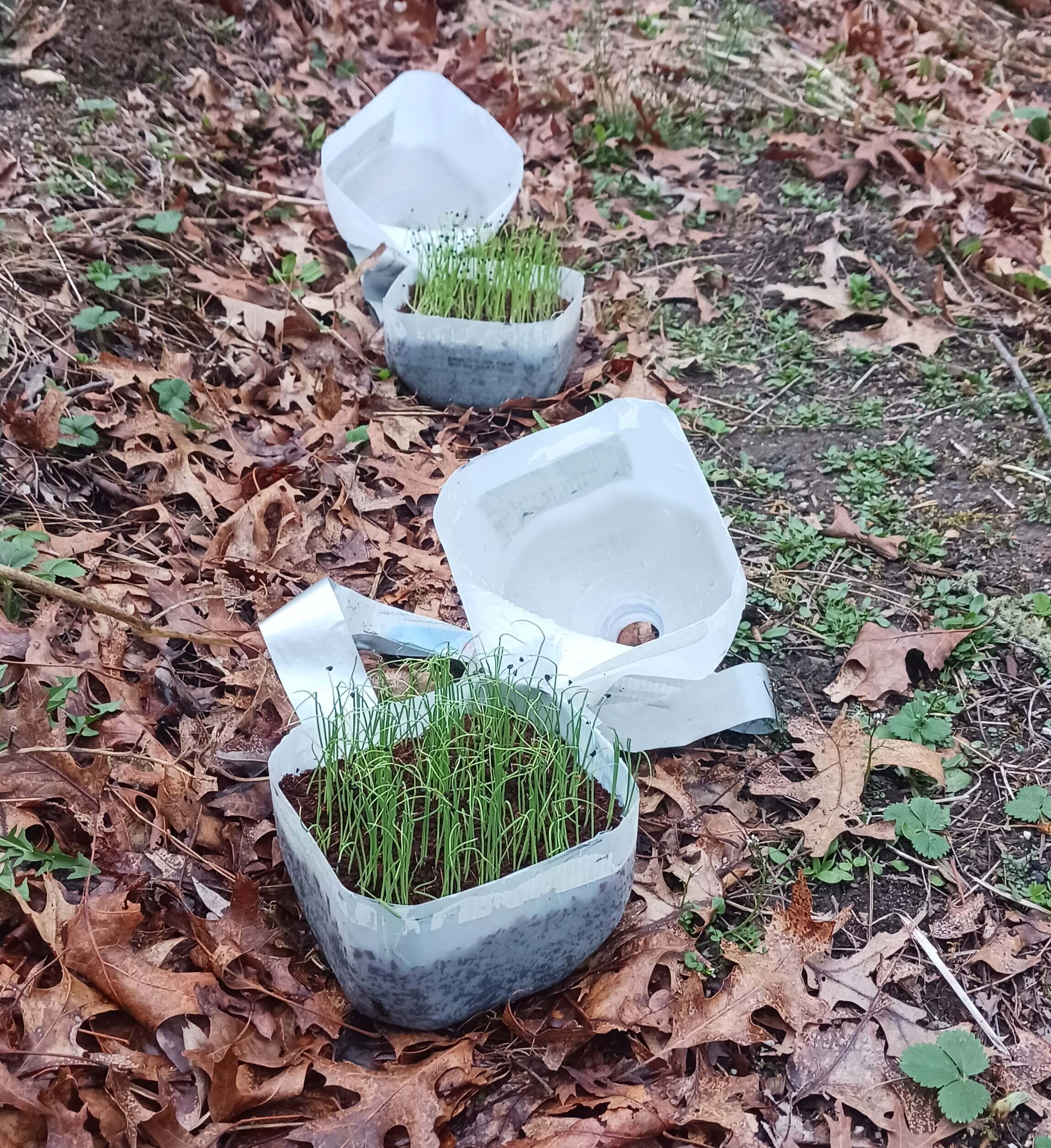
- Day 1-2: 2 hours direct sunlight
- Day 3-4: 4 hours direct sunlight
- Day 5-6: 6 hours direct sunlight
- Day 7: Full day exposure
Transplanting Protocol
- Water thoroughly 24 hours before
- Prepare soil with compost
- Dig holes twice root ball width
- Plant at soil level
- Mulch 2-inch layer
- Water deeply
Success Tracking
Essential Metrics
Track for each variety:
- Germination Rate: Record daily for first 14 days
- Seedling Survival: Track weekly
- Days to Transplant: Note important stages
- Final Success Rate: Document after transplant
Record Keeping Template
CopyPlant Name: _____________
Sowing Date: ___________
Zone: _________________
Germination:
Day 1-7: _______________
Day 8-14: _____________
Survival Rate:
Week 2: ______________
Week 4: ______________
Week 6: ______________
Notes: ________________
Advanced Techniques
Succession Planting
Start new containers every 2-3 weeks for:
- Lettuce
- Spinach
- Radishes
- Green Onions
Container Modifications
- Double-Wall Insulation: For zones 3-5
- Reflective Backing: For low-light areas
- Self-Watering Systems: For consistent moisture
Frequently Asked Questions About Winter Sowing Seeds
How do I protect my winter sown seeds from animals?
To protect your winter sown seeds from animals, use sturdy containers with secure lids. Creating small air and water holes will prevent larger pests from accessing the seeds. You can also place the containers in an elevated area or use a wire mesh around them for additional protection.
Can winter sowing help with pest control?
Yes, winter sowing can naturally help with pest control. The cold temperatures of winter are often too harsh for many common pests, which reduces their likelihood of disturbing your seeds. Additionally, the physical barrier of the containers offers an extra layer of protection.
What are the best containers for winter sowing?
The best containers for winter sowing are clear or translucent, such as milk jugs, soda bottles, or salad containers. These allow sunlight to reach the seeds while providing insulation. Ensure they are clean and have small holes for drainage and ventilation.
How much sunlight do winter sown seeds need?
Winter sown seeds need a good amount of sunlight, similar to traditional gardening. Place the containers in a location where they can receive several hours of sunlight daily, but avoid overly sunny spots that might overheat the seeds on warmer days.
Can I use winter sowing for flower seeds?
Absolutely! Winter sowing is excellent for many flower seeds, especially perennials and hardy annuals. It’s an effective way to start flowers that need a period of cold stratification.
How does winter sowing compare to greenhouse growing?
Winter sowing is a more passive and less resource-intensive method compared to greenhouse growing. It doesn’t require electricity or additional heating. While greenhouses offer more control over the environment, winter sowing utilizes natural weather conditions for germination.
What types of seeds are best for winter sowing?
Hardy annuals, perennials, and certain vegetables and herbs that can endure or require cold stratification are best for winter sowing. Look for seeds that are frost-tolerant or need a period of cold to break dormancy.
When should I start winter sowing?
The ideal time for winter sowing depends on your climate zone. Generally, you can start as early as late December in colder areas and around January or February in milder climates.
Do I need to water my winter sown seeds?
Initially, water the soil when you set up your winter sowing containers. The natural precipitation and condensation inside the containers usually provide sufficient moisture. However, check periodically and water lightly if the soil looks dry.
How do I know when to transplant my seedlings?
Transplant your seedlings when they have developed their second set of true leaves and the outdoor temperatures are consistently suitable for the plant type. Gradually acclimatize them to outdoor conditions before planting them in the ground.
Can I winter sow in a warmer climate?
Yes, winter sowing can be adapted to warmer climates by adjusting the timing. In these regions, you might start sowing a bit later in the winter or early spring to avoid extreme heat as the season progresses.
What are the main advantages of winter sowing over traditional methods?
Winter sowing offers several advantages:
- Low maintenance: It requires less daily care than indoor seed starting.
- Cost-effective: Uses recycled materials and no need for grow lights or heating mats.
- Stronger plants: Seedlings are naturally acclimatized to outdoor conditions.
- Eco-friendly: Reduces the need for plastics and electricity in gardening.
General Questions
Q: Can you winter sow in any climate? A: Yes. Adjust timing based on your zone and last frost date. Zones 3-5 start earlier, warmer zones start later.
Q: Do winter-sown seeds need regular watering? A: Minimal. Natural precipitation typically suffices. Check weekly, water only if top inch feels dry.
Q: What’s the difference from spring sowing? A: Several key benefits:
- Stronger root systems
- Natural cold hardening
- No grow lights needed
- Earlier harvests
Advanced Questions
Q: Can I winter sow tomatoes? A: Yes, but timing matters:
- Zones 3-6: Late February
- Zones 7-8: Early February
- Zones 9-10: January
Q: Is it ever too late to winter sow? A: Depends on your zone:
- Stop 6-8 weeks before last frost
- Consider switching to spring sowing
- Some plants need full cold cycle
Seasonal Care Instructions
Winter Maintenance
- Monitor Temperature: Daily checks
- Snow Coverage: Leave in place for insulation
- Check Moisture: Weekly
- Protect from Wind: Use barriers if needed
Early Spring Care
- Ventilation: Increase gradually
- Temperature: Monitor for overheating
- Seedling Care: Thin as needed
- Disease Prevention: Remove affected plants
Spring Transition
- Hardening Off: Follow 7-day schedule
- Transplanting: Wait for proper conditions
- Protection: Use row covers if needed
- Monitoring: Watch for pest issues
Online Communities
- Regional Growing Groups
- Seed Exchange Networks
- Expert Forums
- Photo Sharing Platforms
Final Tips & Success Metrics
Key Success Indicators
High Success (90%+ germination)
- Proper temperature monitoring
- Consistent moisture levels
- Adequate ventilation
- Quality seeds
- Sterile materials
Advanced Tips for Maximum Success
- Label Everything: Use permanent markers
- Keep Records: Document successes/failures
- Save Containers: Reuse successful setups
- Join Communities: Share regional knowledge
- Start Small: Begin with hardy varieties
By the Numbers
Expected Success Rates:
- Hardy Perennials: 85-95%
- Vegetables: 80-90%
- Herbs: 75-85%
- Tender Annuals: 70-80%
Cost Savings
Traditional vs. Winter Sowing:
- Grow lights: $100-200 saved
- Heat mats: $50-75 saved
- Energy costs: $20-30/month saved
- Containers: Free (recycled)
Conclusion
First Year Goals
- Start Small: 5-10 containers
- Choose Hardy Plants: Begin with proven varieties
- Document Everything: Create detailed records
- Learn Your Zone: Master local conditions
- Build Community: Connect with local gardeners
Long-term Success
- Expand variety selection yearly
- Develop regional expertise
- Create seed-saving program
- Share knowledge
- Perfect timing for your zone
Remember: Winter sowing isn’t just about early starts—it’s about working with nature to create stronger, healthier plants while reducing your environmental impact and gardening costs.
Success is a journey. Start small, learn continuously, and enjoy the process of becoming a winter sowing expert.

